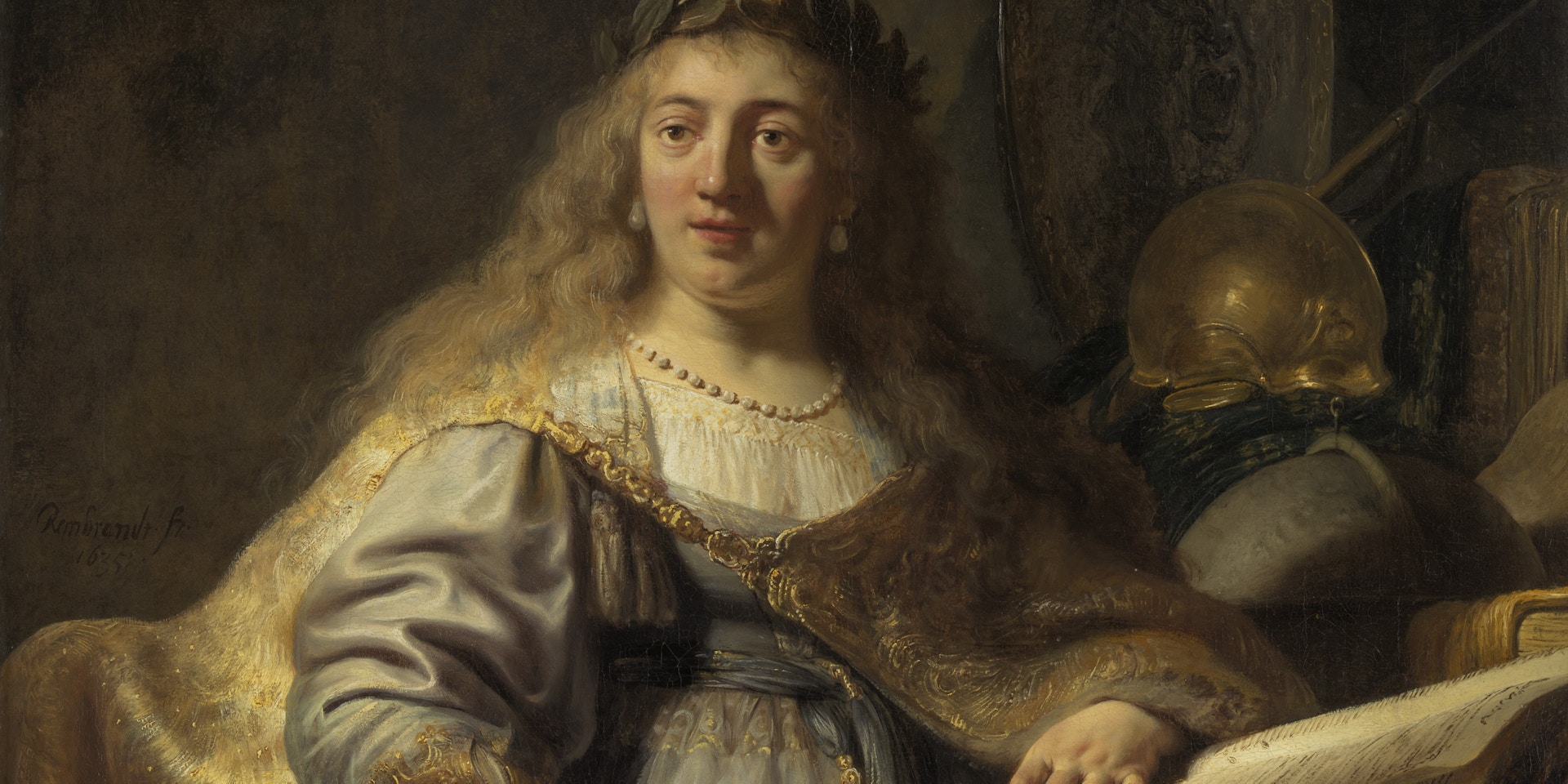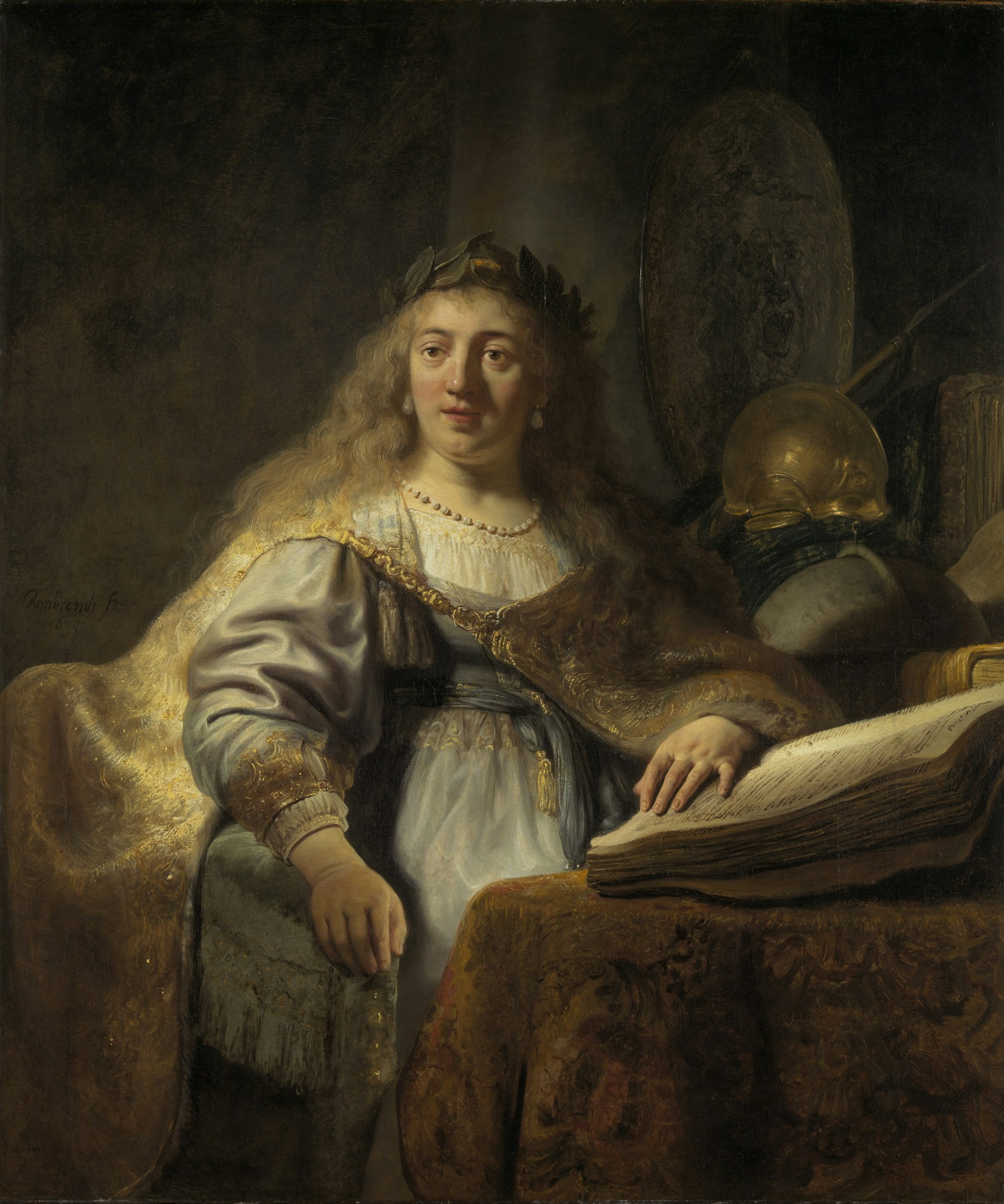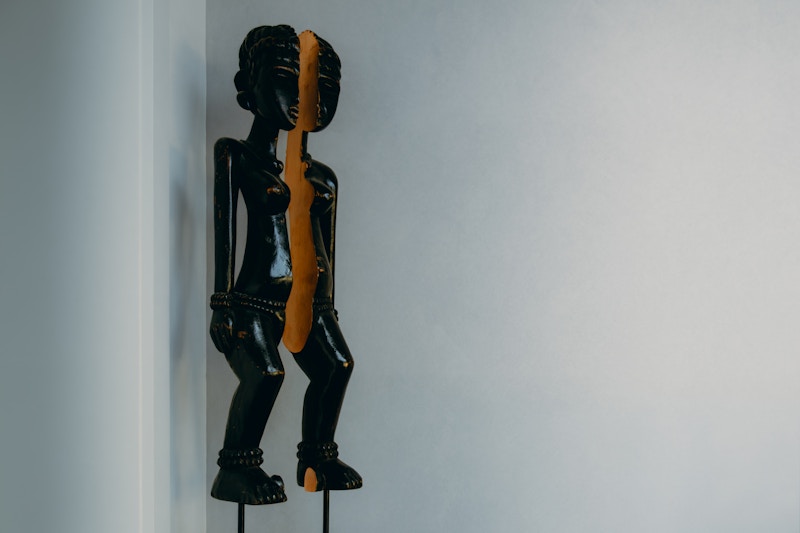
Rembrandt van Rijn, Minerva in Her Study, 1635. Oil on canvas. 138 x 116.5 cm (54.3 x 45.9 in.). The Leiden Collection.
Through A Collector’s Eye: Thomas Kaplan on Collecting Old Masters
After amassing the largest collection of Rembrandt works in private hands, Kaplan reflects on 20 years of building his collection
- By Cheyenne Wehren
- Collector Interview
One of Thomas Kaplan’s earliest memories of his interest in art is of his first encounter with a work by Rembrandt. “When I was about six years old, my mother took me to the Metropolitan Museum of Art in New York, where I fell in love at first sight with Rembrandt. Every weekend, I’d ask her to go back to the Met and spend time with Rembrandt.” Kaplan’s mother attempted to expand his palate, taking him to the Museum of Modern Art to explore its modern and contemporary collections. “We stood in front of a blank canvas with a line across it, and apparently, I crossed my arms, shook my head, and said, ‘No, take me back to the Rembrandts’,” Kaplan shares with a laugh. He remembers the immediate connection he felt at a young age to Rembrandt and his paintings. Family trips would soon bring him to Amsterdam, a destination steeped in the legacy of Rembrandt. Kaplan continued his study of art, training his eye in European museums through regular travels, and ferociously expanded his knowledge through expert literature on the artists he loved.
Becoming a Collector
While his longtime interest in Old Masters and his pursuit of a PhD in history at Oxford would undoubtedly provide a strong foundation for an emerging art collector, he never saw himself becoming one, immediately dismissing the idea when his mother-in-law once brought it up. Fervently opposed to “materialism” then (a perspective that has since somewhat faded, he shares), he also never thought it possible to collect Old Masters, thinking they all “surely must be in museum collections.” A dinner in 2003 where Kaplan was seated next to Sir Norman Rosenthal—then-exhibition secretary at the Royal Academy of Arts—changed his perception when asked what he would collect if he could. Explaining his trepidations about collecting Old Masters—their scarcity, being undervalued in contrast to modern and contemporary art, and their most certain inclusion in museum collections by now—Rosenthal pointed out that, while not common, it was in fact a good moment to explore the market and build a collection of Old Masters. While Kaplan left the conversation with the agreement that Rosenthal would let him know if he heard of a work by Gerrit Dou for sale, it was a deeper understanding of the possibilities of the art market that proved to be his biggest takeaway. “The important part of this conversation was that Sir Norman made clear that what I love was actually available.”

Thomas Kaplan. Photo: Paul Lehr.
Building a Collection
Not long thereafter, Kaplan’s conversation with Rosenthal resulted in his first acquisition of a painting, Portrait of Dirck van Beresteyn (c. 1652) by Dou, through a dealer, marking his first foray into the Old Masters market. His experiences with various dealers over the past 20 years have been the foundation of his activities on the art market—relationships he deems pivotal for the formation of his collection. Important roles have been played by Otto Naumann, Salomon Lilian, and Johnny Van Haeften, who became Kaplan’s “closest collaborators and advisors.” “It is due to the loyalty and tenacity of dealers that I gained access to these kinds of paintings, and managed to expand the Collection so rapidly and intensely,” he says, having acquired, on average, one painting a week over the course of five years. Preferring private sales, Kaplan acquires at auction as well, but also there he relies on the relationships he has built with dealers through their support in bidding or inspecting a work in person when he is not able to.
Kaplan lets himself be guided in the process of acquiring a work—or not—by the same feeling he had as a six-year- old looking at Rembrandt: an immediate connection. “I’m a serious person and a very passionate individual. When I’m interested in a painting, I’m all in, and I’ll tell a dealer immediately.” Since that fateful dinner in 2003, Kaplan and his wife Daphne have built an extensive collection of Dutch 17th-century paintings. Aptly named The Leiden Collection, in honor of Rembrandt’s place of birth, it comprises over 250 paintings and drawings by some of the period’s greatest artists. Rembrandt, his circle in Leiden and Amsterdam, as well as artists related to the master in various ways are the Collection’s focus. Seventeen paintings and two drawings by Rembrandt spanning the entire arc of his career sit at its core—the most important collection of the master’s works in private hands—while paintings by artists such as Dou, Frans Hals, Jan Lievens, Frans van Mieris—and, unique in a private collection, Vermeer and Fabritius—explore the singular impact and influence that Rembrandt had on his fellow 17th-century peers. Primarily driven by the beauty he sees in the works of these artists, another common denominator is the depiction of the human figure—Kaplan’s main collecting areas being history painting, portraiture, and genre scenes. “We don’t collect still lifes, landscapes, or seascapes. I appreciate them, but for us, it’s about the engagement with people in art.”

Rembrandt van Rijn, Minerva in Her Study, 1635. Oil on canvas. 138 x 116.5 cm (54.3 x 45.9 in.). The Leiden Collection, currently on view in the exhibition Rembrandt & His Contemporaries. History Paintings from The Leiden Collection at the Hermitage Amsterdam until August 27, 2023. Courtesy of The Leiden Collection.
Passion and Mission
Kaplan’s collecting is not only driven by his personal passion for Dutch Old Masters. From the start, he had a very specific goal in mind. The Kaplans never lived with the paintings they acquired, instead creating what Kaplan calls a “lending library,” providing the artworks to public institutions for special exhibitions or longer-term loans for their permanent collections. “I’ve been asked before how I can not live with one of our Rembrandts,” says Kaplan. “For us, the question would have to be asked the other way around: how can we live with Rembrandt? I get pleasure from seeing a reproduction and out of the fact that we own them. But I get much more pleasure out of knowing that they are being seen by the broader public.” He remembers the moment when he reached certainty in this decision, only a year after starting to collect. “We had lent our Lievens painting of Boy in a Cape and Turban (c. 1631) to the Getty Museum on the occasion of a symposium. I flew to Los Angeles to participate in the event, and while visiting the exhibition room where the painting was on display, a group of young students wandered in. One girl became fixated on the boy while her fellow students had already wandered off. You could see this connection; it was transfixing. I told the curator, ‘I get it now: we are only going to lend our paintings from now on’.’’
Kaplan and his wife remained anonymous lenders to museums until 2017. That year, they launched The Leiden Collection’s online catalog, providing in-depth scholarly explorations of their entire collection as well as an international exhibition program of highlights from the Collection in museums in Paris, Beijing, Shanghai, Moscow, St. Petersburg, and Abu Dhabi. The Kaplans became more vocal about the art they so admired. What he has wanted to accomplish with the Collection, Kaplan explains, “is for people to understand the enduring beauty and significance of Dutch art of the 17th century.” More specifically, he aims to evangelize about a deep belief that Rembrandt represents the most important and impactful painter of all time. “I do not dwell so much on Rembrandt the individual; my interest lies with the impact of his work: his brushwork, his use of paint, his dispensing with many classical conventions of how to express the inner life of a person, what he thought constituted beauty. Already considered a revolutionary in his time, Rembrandt unleashed a power for artists to be true to themselves,” he shares. “The transformation of his painting from tight and fine to, by the end of his life, almost abstract and expressionist—it is that very arc that paved the way for luminaries like Goya, Turner, Delacroix, Van Gogh, Picasso, and Francis Bacon, all the way through to various contemporary artists like Jenny Saville or Zeng Fanzhi.” Kaplan also sees an even greater mission for art, which equally underlies the Collection and international exhibitions. “We’ve aimed to use the art of Rembrandt to build bridges between people and cultures; through the beauty of his work, we are reminded of what unites us.”

Johannes Vermeer, Young Woman Seated at a Virginal, c. 1672–75. Oil on canvas. 25.5 x 20.1 cm (10 x 7.9 in.). The Leiden Collection. Courtesy of The Leiden Collection.
The Kaplans continue to collect, but with lesser intensity than in the first five years of their journey. “We take opportunities to fill in the gaps for what is a study collection,” Kaplan says. To any new Old Master enthusiast looking to make their way onto the art market, Kaplan goes back to what has been pivotal to his own collecting experiences: namely, building close relationships with art dealers. “My advice to a young collector would be to start with a dealer with whom one can establish a personal rapport. Explain to them what you love, explore with them what you want to accomplish, and let them be your guide to the art market.”
Copyright on works of visual artists affiliated to a CISAC organization has been arranged with Pictoright in Amsterdam. © c/o Pictoright Amsterdam 2023.


